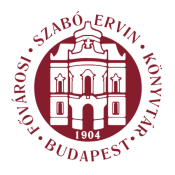Boros Géza: Statue Park - Our Budapest (Budapest, 2002)
The endless promenade of the liberation monuments
Q. Soviet Heroes' Monument (Sándor Mikus, 1970) A popular motif of liberation monuments is a female figure with a palm leaf in her hand representing peace. According to Nóra Aradi, expert iconographer of Socialist fine arts, the palm leaf, that classic symbol of peace, "proclaims the victory which has created peace". This monument was made by Sándor Mikus, the designer of the Stalin statue toppled in 1956. During the revolution, the Soviet heroes' monument in Hősök tere in Rákosszentmihály was also destroyed, and it was that one which Mikus's work replaced. Although made in 1970, the replacement evokes the style of the 1950s. (That was when a prototype of the piece was born: a more animated variation on the palm-leaf motif, the earlier composition won its designer an award at a competition marking the tenth anniversary of the country's liberation and was erected in Székesfehérvár in 1961.) The original plinth was embellished with a five-pointed star and the inscription Gratitude and story to the liberating heroei. In place of the dismantled monument a carved-wood composition featuring the leaders of the Magyar tribes occupying the Carpathian Basin was erected. ■ Liberation Monument by Viktor Kalló. 1965 26
